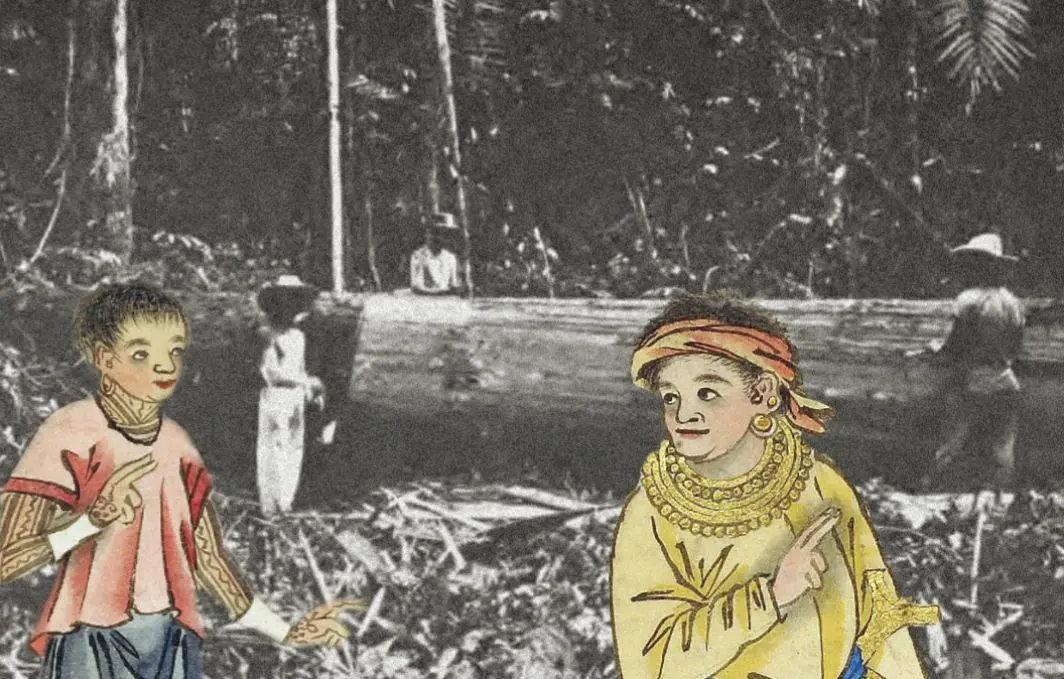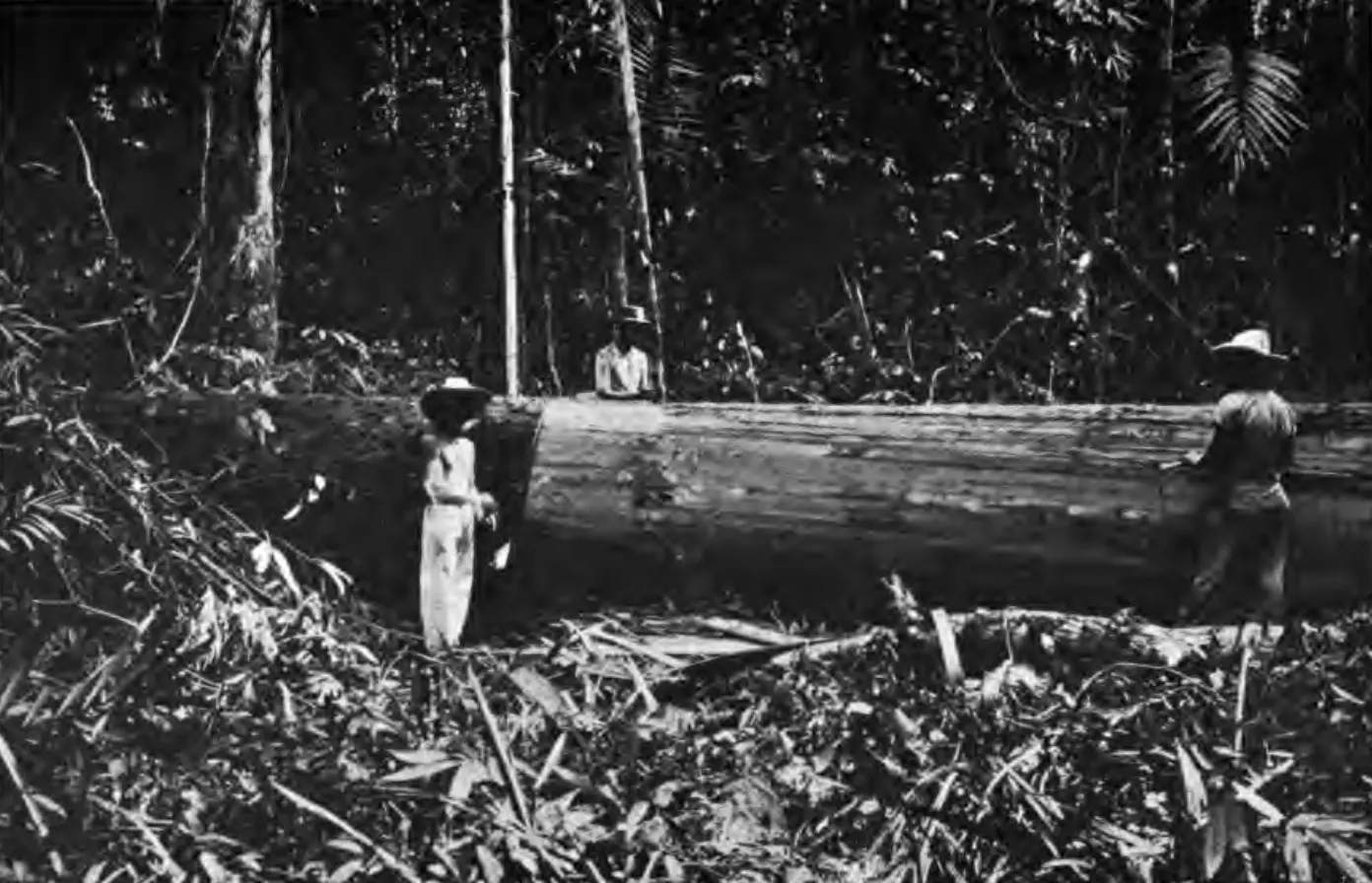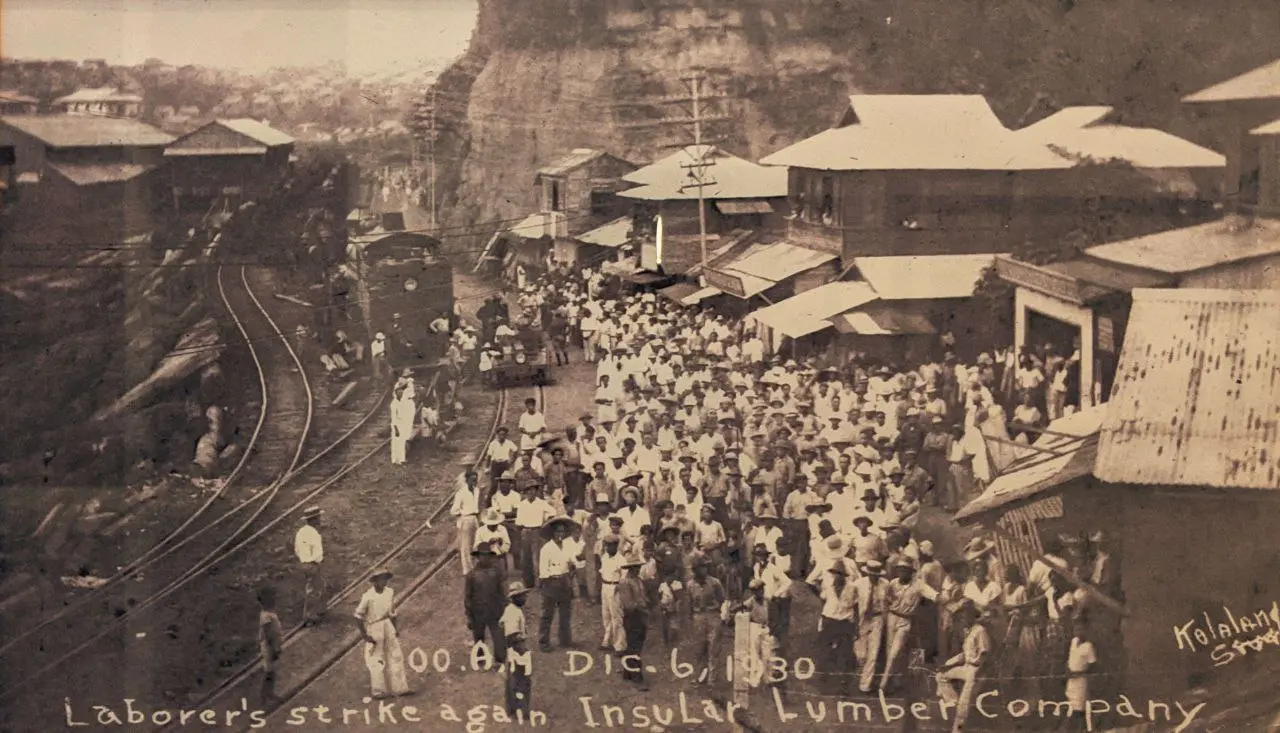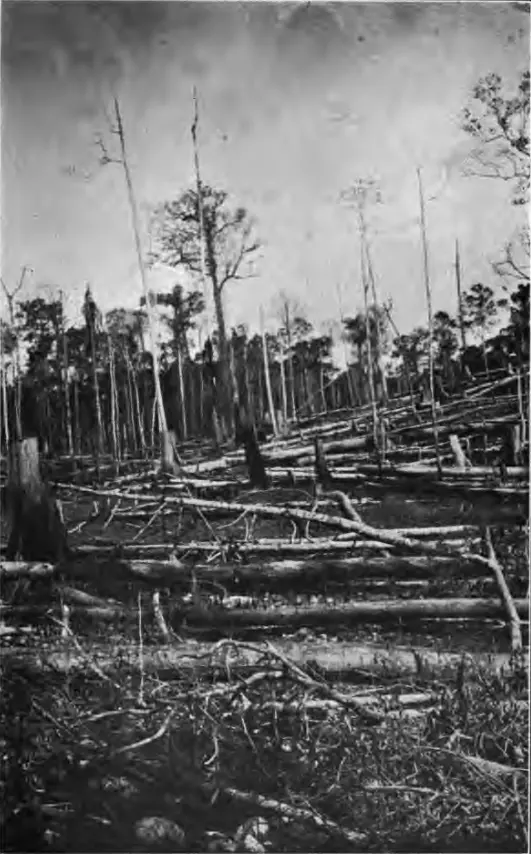
Negrense Heritage as Hacendero Hostage

Beloved nation’s girl group BINI perfectly captured a dilemma almost everyone has faced: confusion and uncertainty over the result of an emotional event. In their hit summer anthem Pantropiko the eight muses sing, “Di na maawatan ang kilig na bigay riyan/ Puso’y parang bang di na mapigilan/ Kumakabog o humihinto”. This passage deftly illustrates the nature of the aforementioned problem through cardiological observations: will event A (the onset of kilig) lead to arrhythmic reaction X (kumakabog) or Y (humihinto)? Will the heart beat irregularly, or will it altogether cease to operate?
Gumugulo ang puso ko sa’yo.
Two interesting case scenarios for this predicament can be found in the pantropikal Visayan islands of Bohol and Negros, although there is a difference in time. The one in Bohol happened quite recently, whereas the one in Negros is more historical. In both cases, damages done to the natural heritage of each island set contrasting passionate responses. The Bohol debacle was met with outright public disdain upon broadcast while the destruction in Negros is commemorated with widespread fanfare.
When netizens saw videos and photos of a resort operating in the midst of Bohol’s famous “Chocolate Hills”, they were outraged. As one of the country’s recognised National Geological Monuments, special rules have been put in place to protect Chocolate Hills from encroachment and to safeguard its pristine condition, ideally preventing any sort of human enacted distortion within its stretch. But the enforcement of these rules have certainly been bypassed, as it was later found that the resort owner had duly furnished various government permits pertaining to the facility’s construction and operation, further fanning the fiery flames of public wrath.
Negros, the other island, also has its own special geological dessert: its mountains are very sweet. From its lowlands up to its higher slopes, the fields of Negros are heavily laden with stalks of sugarcane. For almost two centuries, this crop has defined the landscape and lifestyle of Negros. But, unlike the cocoa mounds of Bohol, Inang Kalikasan had nothing to do in the planting of the endless rows of sugarcane, rather, most plantations began right after episodes of extensive deforestation.
Those primarily at fault for uprooting the native plants of Negros were the hacenderos—we’ll get to that in just a minute. But, despite their chief charge in the botanical massacre of the island, the legacies of the hacenderos are lamentably celebrated nowadays. Even worse, the products of their destruction, the so-called Sugar Cultural Landscape along with many hacendero-owned heritage houses, have recently been nominated for inclusion in the UNESCO World Heritage list.
To fully understand the weight of this disgraceful turn, we must consult history.
Long before the Spaniards arrived, sugarcane (Saccharum officinarum) was already cultivated by precolonial Filipino societies, just not to the degree of sugar monocropping that would become the norm in Negros from the 1850s onwards. Before the said period, the agricultural potential of the island was lying inert — although various produce were already exported, such as cacao, coffee, cinnamon, tobacco, yam, etc., they were hardly making local planters rich. It was the interplay of chance and capitalism that would embolden capitalists from neighbouring islands, mostly from Iloilo, to uncover the commercial promise of the island’s soil, particularly by exploiting it for sugar production. Their coming to the island and swift establishment of their estates by whatever means gave birth to the dreadful hacienda system which still plagues the island today. It wasn’t an easy delivery, however, because it was immediately met with a crucial concern. The initial constraint was that of space: for hacenderos to maximise profits, it was imperative that they expand their holdings, because more space meant more area to plant profitable sugarcane.
Problem was, there were a lot of trees that were standing on the way. If only. . .
After the Negros Revolution, or Cinco de Noviembre, of 1898, the hacenderos found themselves at the helm of the island’s leadership. But instead of addressing and correcting the colonial abuses experienced during Spain’s rule, the hacenderos quickly maneuvered to secure American protection and patronage. A 1900 report to the Philippine Commission states that days after the revolution the hacenderos immediately sent a delegation to meet with the American Military Governor Elwell Stephen Otis “to offer unconditional adherence to the American Government”. Simply put, they kicked their old masters just to kneel down to a new one who brought better commercial prospects. And so it came to pass that in February 1899, while other Filipinos were still up in arms resisting American rule, the hacenderos had already raised the American flag in Bacolod, even though there were no Americans present in the city at the time.1

Taken from El Progreso, 16 April 1903. Notice the American flag draped behind the officials.
With backing from an ascendant global empire, the hacenderos now had the political legitimacy and prestige needed to shape the island according to their desires. For the Americans, having the hacenderos act as local surrogates gifted them the bureaucratic bypass to enact whatever programmes they saw fit to extract what they needed and wanted from the island. This was an irresistible gravity that pulled many enterprising businessmen towards this new American enclave. In 1904, the Insular Lumber Company (ILCO) was granted a 20-years concession to operate on the island. That is to say, they were legally allowed to cut and clear the forests of Negros.
It was ILCO that helped solve the problem of hacendero expansion.
Before 1903, “practically no timber had been exploited, except for local needs”, so says the report by the Bureau of Forestry titled A Preliminary Working Plan for the Public Forest Tract of the Insular Lumber Company, Negros Occidental, P.I. printed in 1906. It’s as if the Americans were admonishing the Spaniards for not being very good colonial overlords, in the sense of actually being very bad to their imperial subjects. Three centuries of domination, and the forests are relatively untouched? Pathetic. The Americans would have none of that, but would have all of the profitable lumber instead. And unlike the Spaniards who cherished their siesta, the Americans championed speed. It didn’t take long for the exotic avian choir of Negros to have their rich repertoire of birdsong interrupted by staccatos of axes and the murmur of machines; and the lofts from which these birds sang collapsed, as the aged trees of Negros were felled to the concert of commercial ambition.
ILCO’s operations were so intensive and widespread that by the late 1920s they were capable of producing “50,000,000 board feet per annum", earning them the distinction of being the “world’s largest producer of hardwood lumber.”2 In other words, Negros became the de facto biggest lumber yard in the world. To achieve this level of success requires dedication that is, to put it mildly, diabolical: a perverse focus on making as much profit as possible from paramount arboreal atrocities. Indeed, you “can’t see the forest for the trees". But what forest is there to see when there are hardly any trees left?

A large almon tree is felled in Northern Negros, c.(1900s).
Fortunately, the hacenderos soon embarked on a greening project to restore Negros’ verdant vibrancy. Unfortunately, they planted stalks of sugarcane, a grass, where native trees once towered. There was no current of ecological awareness running underneath this design, rather, it was spurred by a simple entrepreneurial logic: not only did planting sugarcane add much needed green to deprecated deforested land, but it also promised profits. Of course, many of the hacenderos were so eager and committed to this effort that they ordered nearby natives to go ahead and cut down trees so they can immediately replace them with sugarcane. This made ILCO quite upset. They were already having problems policing caingin, now they had to deal with hacenderos who were all of a sudden advocating native practices:
“The problem of protecting the tract against this danger [caingin] is made more difficult by the attitude of the owners of several sugar plantations adjacent to the northern boundary, who evidently encourage and inspire many of the clearings in the public forest, with the object of securing the land after it is abandoned by the authors of the caiñgins [sic].”
In April of 1930, a massive fire broke out of ILCO’s main headquarters and spread around Fabrica, Sagay. More than 800 houses were damaged, the number of deaths were said to be many, difficult to determine from the chaos that ensued. Once the rubble was cleared what was revealed to many was a festering wound that the ILCO-hacendero tandem had been cultivating for decades.
ILCO engineer Carlos Lopez claimed that the refusal of “laborers to fight fire without overtime” pay exacerbated the devastation.3 Several labour protests against ILCO erupted in the following months.4 These demonstrations were quickly suppressed by the local constabulary force, often with mass arrests and various forms of violence. On 8 December, the protests reached its boiling point, as about 400 workers walked out of ILCO demanding “higher wages and better settlement”.5 But, while the workers were busy amplifying their voices, ILCO officials, probably unable to hear with ears clogged with sawdust and cash, said that “there has been no strike in the factory and that they have not received complaints from the laborers.”6

ILCO employees on strike. Picture from the Lopez Collection displayed at the Negros Museum.
What ILCO could not deny, however, was the fact that the growing unrest within their quarters was not unique to them, but it was only a localised manifestation of an already virulent infection in the island caused by none other than the sugar industry:
“Occidental Negros laborers are restive and easily victimized by agitators due to the prolonged depression in sugar, the province’s principal industry.”7
Unbeknownst to ILCO and the hacenderos, but felt daily by the workers and poor of the island, the sugar industry had cursed Negros with a double-diabetes corroding the island’s natural and social organs. Sadly, this painful series is almost forgotten in popular memory, thanks in part to a conscious effort to deliberately sugarcoat the suffering that swept the island via hortatory heritage advocacies which often glorify hacendero owned mansions as purely artistic monuments. Even today, after decades of continuing brutalities, the refusal to acknowledge such damages persists, and one prime example of such denial can be found in no less than the accompanying text to the UNESCO nomination:
“While many sugar producing regions of the world relied heavily on slave labor – and not to detract from the gravity of the socio-economic circumstances (and debt bondage in particular) of farm workers – the workers in the Philippine sugar industry were not bound by race, were not classified as chattel, with the sacada in particular being free to travel from different communities to the haciendas and between different haciendas [emphasis added].”
Ah, yes. At least it wasn’t chattel slavery, so the sacadas and other farm workers shouldn’t be so indignant and instead be thankful. Others had it worse, you know. Also, they were “free to travel” — giving sacadas a strong argument for being the original pioneers of #travelgoals, as they could simply transfer to another hacienda if things didn’t go their way.
But the whole passage is a blatant lie. The fact that it was written and submitted to UNESCO is indicative of how proponents of this hacendero-centric fantasy have zero regard for history just as long as they can propagate their lies. For them, history is just a means to legitimise their hyperbole. How so? In his damning recollection of what he witnessed in Negros, dated 29 August 1898, the Belgian Consul at Manila Édouard André says that:
“In the plantations belonging to the rich families of Mestizos or Indians, the workmen are treated very inhumanly. If they do not work quick enough they treat them exactly as slaves were treated in South America. The most common punishment is to lash their backs with a thin bamboo; twenty-five lashes is the most ordinary punishment. I saw some receive 100 lashes in Negros Island, in the estate of Aniceto Lacson, an Indian [emphasis added].”
While not technically labeled as such, the working conditions in the haciendas that comprise the Sugar Cultural Landscape was tantamount to slavery. Undoubtedly horrible, but, as alleged, plantation workers were “free to travel”, so why didn’t they just leave when they were being brutally punished? The simple answer is they couldn’t. Farm labourers were restrained with the heavy, invisible chain of debt. And it was this financial bondage that prevented any sort of mobility for the sacadas. Speaking of its paralysing effects on farm workers, André adds:
“At the end of the year . . . as long as he does not pay his debt he is considered a slave, and if he runs away he will be arrested and returned to his master and is awfully lashed [emphasis added].”8
It should be noted that Aniceto Lacson’s estate is one of those mentioned to be recognised by UNESCO as part of the island’s “heritage”. The fact that torture inflicted by Filipinos on other Filipinos regularly happened within its premises should be enough to disqualify it from any considerations of being culturally significant to the island of Negros. Whose heritage is it anyway to be able to brutally hurt others with impunity? Only the powerful and rich enjoy such privileges, never the workers, the very people that actually produce wealth. But Lacson is not alone, for many of his hacendero contemporaries were agents of mayhem. In fact, violence was so intrinsic to their class that they also fought against each other, often with the charge of heavily armed personal armies.9
As they stand, the heritage houses that emerged out of the Sugar Cultural Landscape are not just expressions of the dominant artistic fancies of their owners, but they are ultimately tombstones of the many workers who suffered and died at the expense of making the landlords wealthier. It can even be argued that none of these hacenderos added anything to enrich and protect indigenous and local cultures which already existed and thrived in the island. Instead, they caused widespread cultural and natural destruction, which they then covered with their own mongrel artistic tastes, mostly derived from Europe.

A forest in Northern Negros after being cleared by ILCO, c.(1900s).
Should the UNESCO National Commission of the Philippines and the National Historical Commission of the Philippines stand idle and allow this historical travesty to push through, then we should just go on and celebrate other structures built out of pointless agony and torment. There are many slaughterhouses, torture chambers, POGO facilities, crime scenes, labour encampments, etc. across the country that might be of interest to them, perhaps someone can find the time to nominate some as well. Never mind history, what’s that for anyway? Just add some foreign architectural flare to the site and voila, we’ve got ourselves new UNESCO-approved heritage sites.
Or, the better option would be to just leave these structures to rot — a much deserved fate. After all, the legacies of ILCO and the hacenderos still plague the island to this day regardless of the status of these structures, your heavily sweat-soaked shirts hang as willing witnesses. With no large and native trees to provide natural shade, it has become noticeably hotter in the island, adding poignancy to BINI’s hymn: with the hacenderos, “it feels like summer when I’m with you”, because it’s scorching hot regardless of the month.
-
Elkanah Babcock, A War History of the Sixth U.S. Infantry: From 1798 to 1903, With Rosters and Memorials of the Cuban and Philippine Campaigns (Kansas City: Hudson-Kimberly Publishing Co., 1903), 59. ↩︎
-
Louis Borja, “The Philippine Lumber Industry”, Economic Geography 5, no. 2 (1929):201. ↩︎
-
“Refusal of Fire Fighters to Work Overtime Blamed for Loss”, The Evening Independent, April 19, 1930. ↩︎
-
Alfred McCoy, “The Iloilo General Strike: Defeat of the Proletariat in a Colonial City”, Journal of Southeast Asian Studies 15, no. 2 (1984): 346. ↩︎
-
“300 More Workmen Join Big Strike In Lumber Camp”, Progress, December 14, 1930. ↩︎
-
“Fabrica Officials To Be in Hot Water”, The Tribune, December 16, 1930. ↩︎
-
“Reds Threaten Filipino Lumber”, The Spokesman-Review, December 12, 1930. ↩︎
-
Murat Halstead, America’s New Possessions: The Isthmian Canals and the Problem of Expansion (Chicago: The Dominion Company, 1899), 330. ↩︎
-
Alfred McCoy, “A Queen Dies Slowly: The Rise and Decline of Iloilo City” in Philippine Social History: Global Trade and Local Transformations, eds. Alfred McCoy & Ed de Jesus (Quezon City: Ateneo de Manila Press, 1982), 320. ↩︎